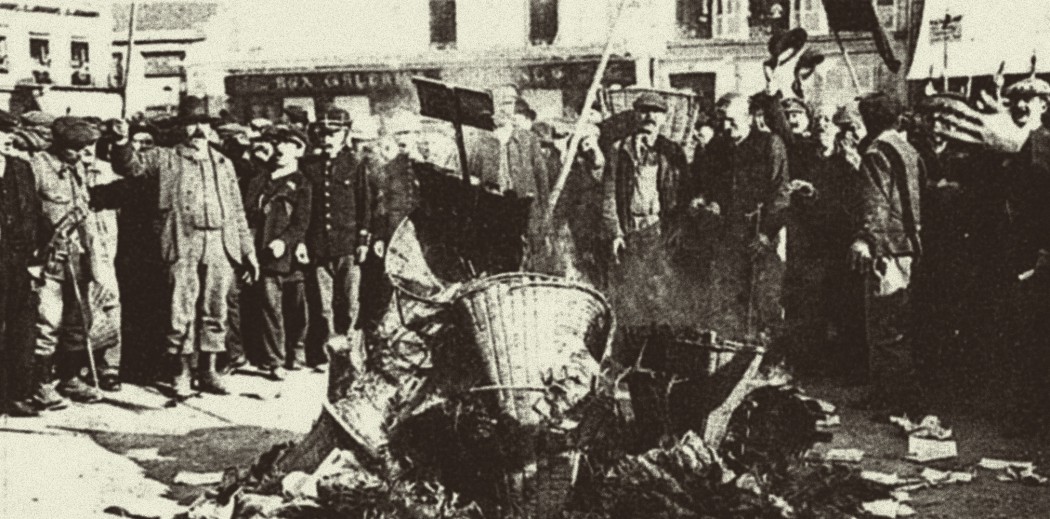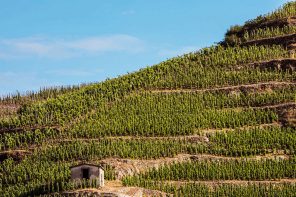The thought of Champagne conjures up reveries of celebrations, sophistication and general joviality. But there was a time, just over 100 years ago, when that wine region extraordinaire was the nexus of rather serious unrest. From 1910 to 1911, riots broke out in the villages of Champagne where violence caused the streets to run with spilt wine.
The roots that grew into the Champagne Riots had their beginnings in the 19th century. The phylloxera louse, which had munched its way through so many of France’s great vineyards, had finally made its way to Champagne. As in France’s other regions, many vinifera vines succumbed to the jaws of this tiny pest, hurting overall yields. While it played a significant role, it took more than phylloxera to cause tensions to boil over to the extremes seen during the riots. A perfect storm of bad weather created poor vintage yields which hit growers in waves for several years starting as the 19th century turned to the 20th. In the year leading up to the riots, much of the harvest was lost to ferocious hail storms and floods.
The situation as it was in Champagne was already strained. No one could quite agree on what geographically constituted the region, but the need to put laws in place was becoming dire; pretenders from around the winemaking world were attempting to capitalize on the Champagne name. Early legislation saw the départements of Marne and Aisne approved, notably omitting the Aube. As the location of Champagne’s historic capital, Troyes, the Aubois growers were incensed. Protests broke out and the government sought to rectify the situation by including Aube in the delineation. Naturally, this caused the growers in the Marne to revolt, leading to the destruction of more vineyards and wine.
Their troubles were compounded by the fact that Champagne was more popular than ever. To meet demand, Champagne houses (known as négociants) did what today would be considered unthinkable – they brought in wine from other regions to make up the difference and, in the process, alienated local growers. It didn’t help matters that these non-Champagne wines, which came from every corner of France, Germany and Spain were considerably cheaper.
For a moment, it looked like Champagne’s growers might be out of a job. If all of this wasn’t bad enough, it soon came to light that the houses were illegally fixing prices in order to lower the cost of grapes. Already struggling with incredibly low yields, growers became incandescent by the fact négociants were not only swindling them out of their livelihood but besmirching the good name of the region by using faux wine to satisfy the needs of the thirsty public. And so the inevitable happened. Rather than stand by and quietly endure the abuse, in early 1911, they began to riot.
Not unlike some of the wine protests going on today in the South of France, the Champenois growers hijacked incoming trucks of wine and grapes and dumped them into the Marne River. But they didn’t stop there. In their righteous fury, they raided the cellars of the Champagne houses, busting their way through every bottle and barrel of fake Champagne they came across. Aÿ saw the worst of it; as the village with the largest concentration of négociants, it was here that the wronged growers displayed much of their fury. It didn’t take long for things to go up in flames, quite literally. Many warehouses were burned in the fires that coursed through Aÿ. To suppress further incidents, the government sent in the army to oversee the situation. Discussions were held but it was some time before anything was accomplished.
World War I got in the way of talks and it wasn’t until 1927 that a law was finally passed that defined the region. Villages were ranked according to quality and grapes were priced based on their village of origin in a system known as the Echelles de Crus, ensuring fair pricing moving forward. It was amended in 1985 to include more Grand Cru villages.
The outcome of the riots had a profound impact not only on the future of Champagne, but also France and the rest of the world. The demands laid out by the Champenois growers contributed to the formation of the appellation d’origine contrôlée system as we know it today.
So next time you pop open a bottle of everyone’s favorite social lubricant, pause a moment to consider the events that led to the birth of that bottle. The harvest yes, and months slumbering in cellars, but also the struggles of vintners over 100 years ago who believed in the integrity of their wines and that consumers should only get the best. That Champagne, true Champagne, can only come from one place.








